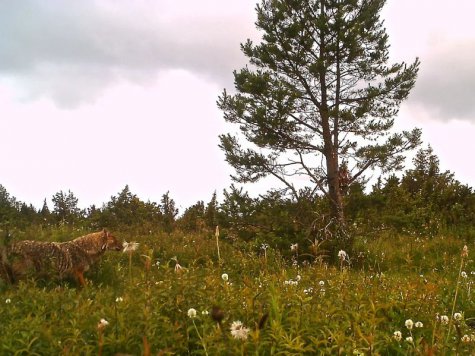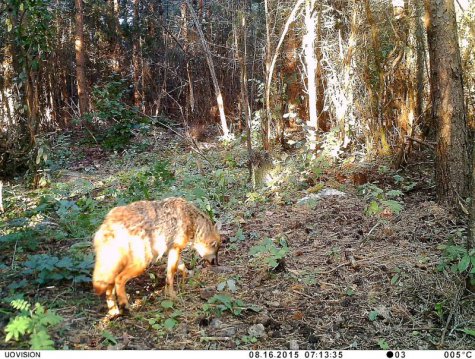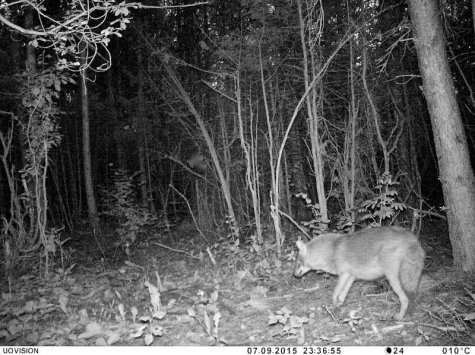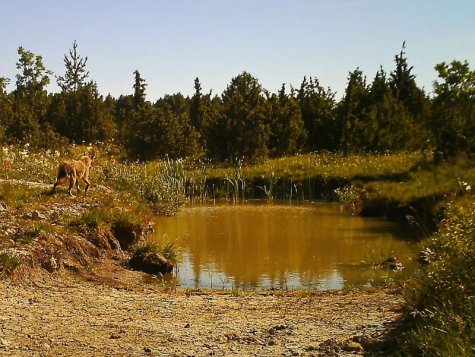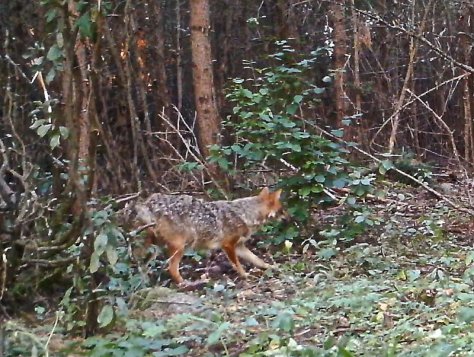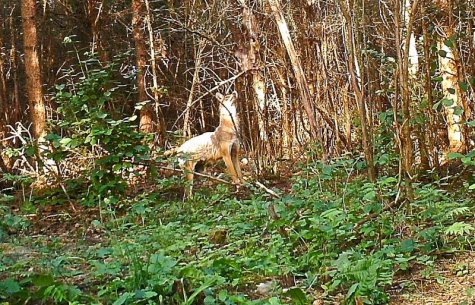New Cameras
Estonian animal already for x years – the jackal
Text and trail camera images Tiit Hunt, www.rmk.ee
Sound record Kessu Kärvet
Translation Liis
The exterior of a jackal is something in between a wolf and a fox; weight 7-15 kilos, a body up to 105 cm long and a tail significantly shorter than that of a fox.
How then did the jackal arrive in Estonia?
Certainly they were here clearly before the first confirmed evidence from Läänemaa reached zoologists.
Ullasat man Andrus, a careful observer of nature, remembers how he together with his daughter in the snowy late winter of 2010 saw and heard ”weirdly howling foxes” in a field near his home. It seemed strange and at that time he did not even dream of connecting the animals with jackals. When he talked about the observation to a biologist, he was jokingly recommended to use less alcohol. Now, in retrospect, he has no doubt that the animals thought to be foxes were jackals. A year later they had a litter in a stone heap at the verge of the field, the following years in the dense juniper thicket at the seashore.
In late summer now almost every day and night the calls of adults and young animals can be heard in the area.
How many jackals can there be in Estonia now?
It is known for certain that jackals breed in Läänemaa and Pärnumaa. Assuming that the jackal pair has had 4-5 pups on average annually then, not taking in account mortality, the offspring of the Läänemaa pair from 2011 onwards should by now be a total of about 25, in addition the pups of their ”children” and ”grandchildren”.
From Pärnu county litters are known from the last three years. They can certainly be present in more areas since information about jackals, verified in various ways, has arrived from other localities in Läänemaa and Pärnumaa as well as Saaremaa, Ida-Virumaa and Viljandimaa. Nobody actually knows how many they are at present.
The nearest habitats of the common or golden jackal have been the Caucasus, Moldavia, Hungary, Austria, the Czech republic, eastern Ukraine. In these areas their numbers have increased and with increasing numbers an animal species will look for new suitable habitats, so widening their range. That jackals suddenly reached a thousand kilometres further seems like a miracle. A parallel might be the raccoon dog whose distribution range widened at a tremendous rate with human aid as well as ”on their own”.
Current knowledge supports the belief that the common or golden jackal /Canis aureus/, of Caucasian origin, has arrived here on its own from the Ukraine. Some individual may have arrived here as a ”pet” who then escaped into the forest but this can certainly not be the only way that the present Estonian jackal population started.
Sound record:
The sounds of jackals calling in the distance and an excited dog were recorded in March 2013 in Üllaste in Läänemaa by Kessu Kärvet.







